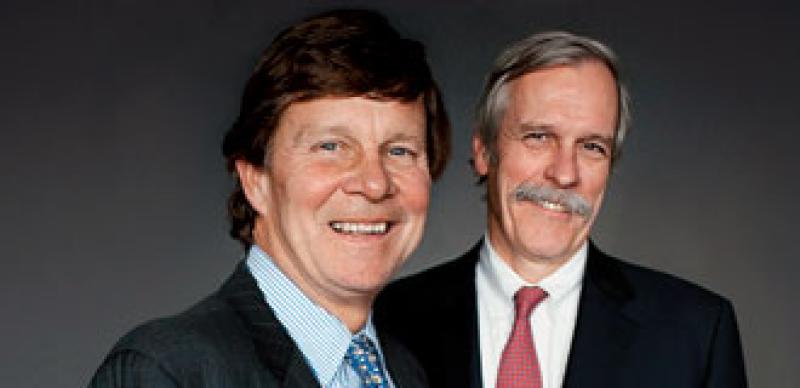“Everyone does better when the markets are great, but Lazard has a business — restructuring — that actually does well when the markets are not doing well,” notes banking analyst Douglas Sipkin of New York–based Pali Capital. Indeed.
In the first nine months of last year, Lazard’s restructuring efforts brought in a record $273 million, or only one fifth less than the firm’s fabled M&A franchise. And as fees typically come in a year or more after a restructuring gets done, the 2009 windfall may be traced to a sharp pickup in business during the darkest days of the financial crisis.
Lazard dominates Wall Street’s restructuring business, owing in no small part to two individuals: co-heads of restructuring (and co–vice chairmen) Barry Ridings and Terry Savage. The duo embody Lazard’s restructuring business in the same way that the late Bruce Wasserstein did its M&A franchise and brought restructuring to Lazard basically as a package deal. When the firm invited them to join in 1999, they brought along 23 members of their bankruptcy team from BT Alex. Brown, including secretaries and summer interns.
Today, Lazard has 153 restructuring specialists around the globe. “We have the biggest team, the deepest bench and the best players, like the New York Yankees,” boasts Ridings. In the past few years, the firm has worked on some of the biggest restructurings around the world, including Charter Communications in the U.S., Parmalat in Italy, Eurotunnel in France and Daewoo Group in South Korea. Lazard’s own numbers suggest that it has roughly a 40 percent share of the global restructuring market.
Why is Lazard so successful at dealing with failed companies? For one thing it is able to exploit the expertise of its investment bank’s industry specialists. It is using a media banker, for instance, to work on the Tribune Co. bankruptcy. But another factor is surely the chemistry between the firm’s co-heads of restructuring. Friends for 30 years, Ridings, 58, and Savage, 62, are a wisecracking duo who finish each other’s sentences and eschew the trappings of investment bankers. (They appeared for a recent interview in rumpled khakis and woolly pullovers.) Their first of many meetings during the day takes place at 7:00 a.m. in a gym near Lazard’s Rockefeller Center offices.
Lazard restricts its restructuring business mainly to the debtor side, as this gives it an inside track on future M&A transactions, for example from spin-offs.
Bankruptcy filings are becoming more complex, not because the law is more convoluted but because the details are so arcane. And that complexity plays to Lazard’s strength as a firm dedicated to restructuring as a mainline activity.
Lazard is adept at completing even multifaceted deals fast. The restructurings of Charter Communications and yellow pages producer R.H. Donnelley Corp. each took less than two months. Donnelley CFO Steven Blondy praises the firm for accomplishing in six weeks what “had the potential of being long and drawn out.”
Some critics fault Lazard for having such clout in restructuring that it can bully creditor banks by threatening them with protracted and costly litigation unless they agree to a speedy deal on Lazard’s terms. The firm doesn’t deny that it sometimes throws its weight around — which after all works for its clients — but points out that creditors can always object to a bankruptcy judge if they feel a case is being drawn out unnecessarily.
Corporate bankruptcies track high-yield-bond defaults, which normally run about 4 percent a year. Today they’re at 12.5 percent. Ridings reckons that such defaults will average 6 to 9 percent over the next few years — and should be a boon for Lazard’s restructuring business. Adds Savage with a grin, “We’re still booking fees from deals we got a year and a half ago” at the height of the financial crisis.






